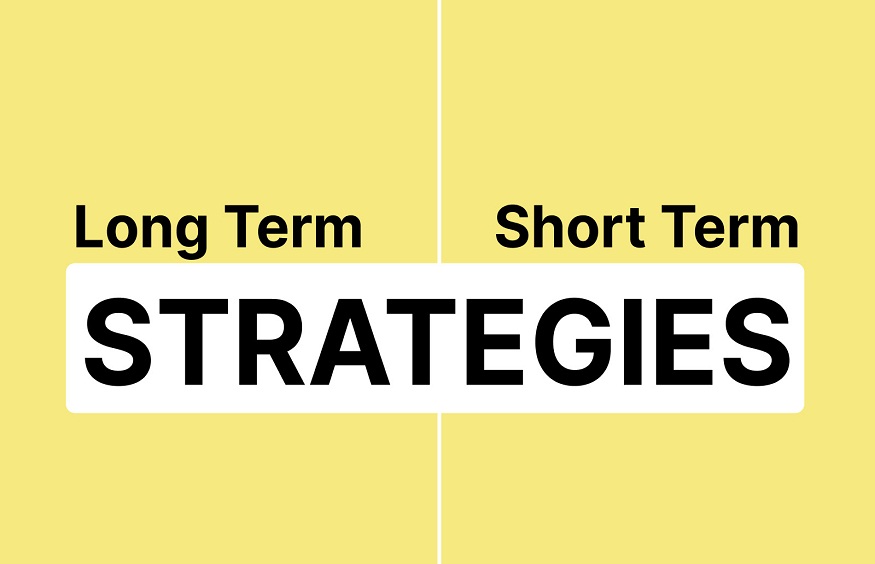Choosing an investment strategy is one of the most important financial decisions you’ll ever make. Whether you’re saving for retirement, a house, or just looking to grow your wealth, the approach you take can have a profound impact on your financial future. The two primary strategies—long-term and short-term investing—offer distinct paths for wealth accumulation. Understanding their differences, advantages, and how they fit into your goals is key to making informed decisions that align with your financial objectives.
Understanding Long-Term Investment Strategies
Long-term investment strategies focus on investments held for extended periods, typically five years or more. This approach is designed to generate capital appreciation over time, relying on the power of compounding and market growth. Long-term investors aren’t concerned with the daily or weekly fluctuations of the market; they are more interested in the potential for their investments to grow steadily over the years.
Common long-term investments include stocks, bonds, real estate, mutual funds, and ETFs. Stocks are particularly popular for long-term investors because they offer the potential for substantial returns as companies grow and markets expand. Bonds, on the other hand, provide more stability, offering fixed returns over time, which can complement riskier investments like stocks. Real estate investments, whether in physical property or through Real Estate Investment Trusts (REITs), also offer long-term growth potential through property value appreciation. Click to learn more.
Understanding Short-Term Investment Strategies
In contrast, short-term investment strategies focus on making quick profits in a matter of months, weeks, or even days. These strategies require a hands-on approach, with investors closely monitoring the market to capitalise on price movements and trends. Unlike long-term investments, which are designed to grow over time, short-term investments are intended to provide immediate returns.
Short-term investments can include high-yield savings accounts, money market funds, short-term government bonds, and more speculative activities like day trading or swing trading stocks, options, or foreign currencies. The goal is to take advantage of opportunities in the market quickly and efficiently. While this approach can be lucrative, it also carries a higher level of risk.
Advantages and Drawbacks of Long-Term Investment Strategies
Long-term investment strategies come with several advantages. One of the most significant is lower transaction costs. Since long-term investors are not frequently buying and selling, they avoid the constant fees associated with short-term trading. Over time, this can significantly boost returns. Additionally, long-term investments benefit from favourable tax treatment in many countries, with long-term capital gains being taxed at lower rates than short-term gains.
However, long-term investments also have their downsides. The main drawback is the need for patience. Since these investments are slow to realise profits, they may not satisfy those looking for immediate returns. Additionally, capital is tied up for extended periods, meaning investors miss out on other opportunities that might arise. There is also the risk of exposure to long-term market forces like inflation, economic downturns, or shifts in the industry that could diminish an investment’s value.
Advantages and Drawbacks of Short-Term Investment Strategies
Short-term investment strategies offer the potential for quick profits, making them appealing to investors looking to capitalise on market movements. The flexibility and liquidity of short-term investments mean that funds can be accessed quickly, which is advantageous for those with immediate financial needs or a desire to keep their capital moving.
However, this strategy is not without its risks. Short-term traders face higher transaction costs due to the frequency of buying and selling. These costs can quickly add up and eat into profits. Additionally, because short-term investments rely on market timing and reacting to price movements, they are subject to significant volatility. The emotional toll of short-term trading can be high, as investors need to stay constantly engaged with the market, which can lead to stress and poor decision-making under pressure.
Key Factors to Consider When Choosing an Investment Strategy
The choice between long-term and short-term investment strategies depends on a variety of factors. Your investment horizon, or how long you plan to keep your money invested, is one of the most critical considerations. If your goals include retirement or building generational wealth, a long-term strategy is likely the best fit. On the other hand, if you’re saving for a short-term goal like buying a home or funding an upcoming trip, short-term strategies may offer the liquidity and flexibility you need.
Risk tolerance is another essential factor. Long-term investments tend to smooth out the ups and downs of the market over time, making them ideal for more risk-averse investors. Those with a higher risk tolerance may find short-term investments appealing, as they offer the potential for quick gains, albeit with greater volatility.
Conclusion
Both long-term and short-term investment strategies offer unique benefits and challenges. Long-term investing is ideal for those looking to build wealth over time with a more patient, hands-off approach, while short-term investing offers the potential for immediate returns, albeit with higher risk and volatility. Understanding your financial goals, risk tolerance, and time commitment is key to deciding which strategy is best for you.

